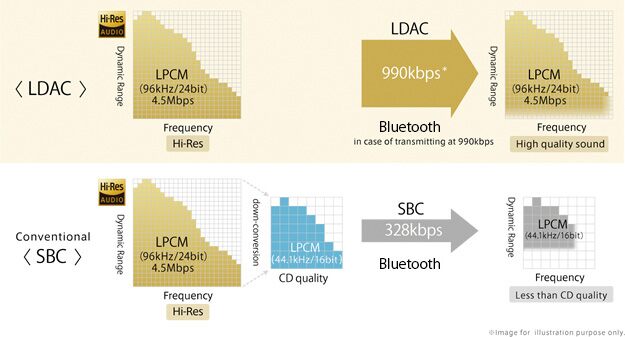Bluetooth hasn’t got any connection to Blu-ray. In 1980s Colchester, UK, Blue Ray was a guy selling dodgy VHS videos out of a car park in the town centre 🙂 But in digital context, Bluetooth has nowt to do with Blu-ray, except it holds digital data. Unfavourably referred to as ‘blurtooth’ by the Audiophile HiFi community, is it fair to turn our noses up at it? I ask too, what is Bluetooth, what does it do, what audio quality does it yield, and who is it for….useful for newbies, or a recap?
How it came about, what is it?
A well known online encyclopaedia; well you know which one – Wikipedia, says Bluetooth is the anglicised word of the tenth century king, Harald Bluetooth, who united Danish tribes into a single kingdom, the implication being that Bluetooth unites communication between devices. This kings name makes you think someone has made it up on wiki.

But this is what Bluetooth does – it was developed by Ericsson Mobile in the late 80s to allow wireless headsets to communicate with mobile/cell phones. It has since become a means of allowing computers and various devices and mobiles to talk to one another. In the audio world, to send your music wirelessly from your phone to your HiFi system, headphones, and TV. The list of devices where it has uses is endless….
Quality?
Bluetooth uses lossy codecs (files) – which discard some of the musical data to put more musical data into any file space. Squashing a tin of Pringles onto a smaller tube means each Pringle has less quality. They aren’t the quality of lossless CD or Hi-Res formats and here is why;
Qualcomm’s aptX HD Bluetooth codec works at 24bits, up to a sample rate of 48khz, which means 24 ‘chunks’ of data being sampled every 48,000 times per second. CD quality is 16bit/44.1khz which gives way to an amount of measured data per unit of time in kbps (kilobits per seconds) of 16×44.1x 2 channels (left and right earphones or speakers), equating to 1411kbps. The more data we have the better the audio should sound, but we won’t get anywhere near the calculated bit rate of 24x48x2, for the aptX HD codec. Depending on the quality of the playback chain, you may or may not hear this against CD quality depending on your set up, but typically we get 576kbps maximum with aptX HD.
Qualcomm’s standard aptX codec works at 16-bit, up to 48kHz sampling rate and typically we will get much less ; a maximum of around 352kbps.

These types of aptX Bluetooth are fairly typical in HiFi and headphone applications nowadays, in contrast to earlier *lesser* SBC (Sub Band Coding) Bluetooth codecs which have a maximum bit rate of 328kbps. You’ll see those as a standard blue Bluetooth logo, but it’s easy to note the aptX codecs too.
AAC Bluetooth codec is an Apple led codec which is developed for iPhones and iPads and similarly for iTunes and Apple Music, typically you’ll get up to 320kbps.
Sony LDAC
Sony’s LDAC Bluetooth codec is different again and utilising up to 24bit/96khz. LDAC was previously exclusive to Sony Xperia mobile phones only, however, it’s now available on a number of Android phones, for example Samsung’s Galaxy S10.

Difference between LDAC & SBC Bluetooth
But depending on connection strength, it operates at 300kbps in connection mode, 660kbps in normal mode, and 990kbps in Quality Priority mode, so is of considerably better quality to AAC, aptX and SBC codec’s. The only issue is it’s only available with Sony Equipment such as their tremendous WH-1000XM3 Wireless Noise-Canceling Headphones 360 headphones, but because Apple iPhones only use SBC and AAC Bluetooth, you’ll need an appropriate Android phone to get the full Bluetooth benefit out of such LDAC headphones.
What 4?
A good way of looking at Bluetooth is that it offers the convenience of wireless transmission especially for guests playing their phones through your HiFi. But if you gear warrants it and due to quality of audio that can be achieved through lossless means – streaming via streaming services or over UPnP (universal plug and play) is always preferable if you have the option, and a good thing to ensure your speaker/streamer/HiFi/whatever, has its own streaming capability too.
Summation
The fact is it doesn’t really matter what we understand about Bluetooth, the specific audio quality we get depends on the components involved, the DAC, how they are implemented and their individual sum quality. So as normal, don’t apply hard and fast rules to your audio set up – you will sometimes be surprised, and to discount Bluetooth on its lossy credentials, in all applications, would be remiss too. For hardened Audiophiles it has its limitations, sure, but to be snobs about it in all applications, we do so at our peril! A Golden rule – try yourself!
March 2020









